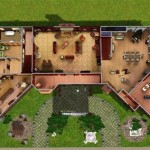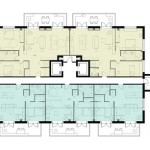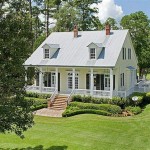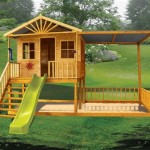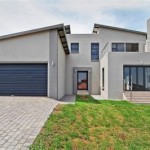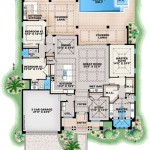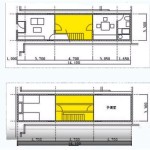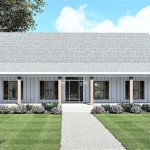```html
Cool Tree House Plans: A Guide to Design and Construction
Tree houses, once considered simple childhood retreats, have evolved into sophisticated architectural structures. Modern tree house plans cater to a wide range of functions, from secluded relaxation spaces to fully functional guest houses. The appeal stems from the unique connection with nature and the inherent sense of adventure they evoke. This article explores essential considerations and design elements for creating cool and structurally sound tree house plans.
Key Point 1: Planning and Design Considerations
Before embarking on the construction of a tree house, meticulous planning is crucial. This involves assessing the chosen trees, determining the desired size and functionality, and adhering to local building codes and regulations. Neglecting these initial steps can lead to structural instability, environmental damage, and legal complications.
Tree Assessment: The first crucial step is a comprehensive assessment of the trees intended to support the tree house. Factors to consider include the tree species, health, maturity, and branch structure. Certain tree species are better suited than others. For instance, hardwoods like oak, maple, and beech are generally stronger and more durable than softwoods like pine or poplar. A qualified arborist should be consulted to evaluate the tree's overall health and identify any potential weaknesses or diseases. The arborist can also advise on the tree's load-bearing capacity and recommend appropriate attachment methods that minimize stress on the tree.
Size and Functionality: The size and intended use of the tree house directly influence the design process. A small platform for observation requires a simpler design than a multi-room structure intended for overnight stays. Consider the number of occupants, desired amenities (e.g., sleeping areas, kitchenette, bathroom), and accessibility requirements. Carefully consider the view lines from the tree house and its impact on privacy. The orientation of the tree house should maximize sunlight exposure in colder climates and minimize it in warmer climates.
Building Codes and Regulations: Tree houses are often subject to local building codes and regulations, particularly concerning height restrictions, setback requirements, and safety standards. Before commencing construction, it's essential to consult with the local building department to obtain the necessary permits and ensure compliance with all applicable regulations. Failure to do so can result in fines, demolition orders, and legal liabilities. Furthermore, it is vital to check for any homeowners association (HOA) rules that may restrict or prohibit tree house construction.
Environmental Impact: Minimizing the environmental impact of the tree house is paramount. Choose sustainable building materials, such as reclaimed wood or bamboo, and employ construction techniques that minimize damage to the trees and surrounding ecosystem. Implement measures to prevent soil erosion and protect the tree's root system. Avoid using nails or screws directly into the tree, as these can create entry points for diseases and pests. Instead, opt for tree-friendly attachment methods that allow for natural tree growth and movement.
Key Point 2: Structural Design and Attachment Methods
The structural integrity of a tree house is paramount. Selecting appropriate attachment methods and employing sound engineering principles are essential to ensure the safety and stability of the structure. Different attachment methods offer varying degrees of support and flexibility, and the optimal choice depends on the size and design of the tree house, as well as the characteristics of the supporting trees.
Attachment Methods: Several attachment methods are available, each with its own advantages and disadvantages.
-Direct Attachment: This method involves bolting the tree house directly to the tree using specialized tree house attachment bolts (TABs). TABs are designed to distribute the load evenly and minimize stress on the tree. Direct attachment is best suited for smaller, lighter tree houses and is typically used in conjunction with other support methods. However, it is important to note that directly attaching to the tree can restrict its growth, depending on the type of fastener used. Over time the fasteners may need to be adjusted or replaced to accommodate the growth of the tree.
-Suspension: Suspension involves hanging the tree house from ropes, cables, or chains attached to strong branches. This method allows for greater tree movement and minimizes stress on the tree. However, it requires careful calculation of load distribution and selection of high-quality suspension hardware. Suspension is best suited for tree houses that are relatively lightweight and have a simple design.
-Platform Support: This method involves building a platform around the tree and supporting it with independent posts or braces. The tree house is then built on top of the platform. Platform support provides a stable and level foundation and allows for more complex designs. However, it requires careful planning to ensure that the platform does not restrict the tree's growth or interfere with its natural movement.
-Floating Tree House: This method involves using a combination of suspension and platform support to create a tree house that appears to "float" among the trees. This design offers a unique aesthetic and minimizes stress on the tree. However, it requires advanced engineering and specialized construction techniques.
Engineering Principles: Regardless of the chosen attachment method, sound engineering principles must be followed to ensure the structural integrity of the tree house. This includes calculating load-bearing capacity, designing for wind resistance, and selecting appropriate building materials. Consult with a structural engineer to review the plans and ensure compliance with all applicable safety standards. Pay particular attention to the connections between the tree house and the supporting trees. These connections should be designed to withstand the forces of wind, gravity, and tree movement. Use high-quality fasteners and hardware that are specifically designed for tree house construction.
Tree Movement and Flexibility: Trees are dynamic structures that sway in the wind and grow over time. The tree house design must account for these movements to prevent stress on the structure and the trees. Incorporate flexible connections between the tree house and the supporting trees to allow for natural movement. Use sliding joints or flexible fasteners to accommodate tree growth. Regularly inspect the tree house for signs of stress or damage, and make necessary repairs promptly.
Key Point 3: Material Selection and Construction Techniques
The choice of building materials and construction techniques significantly impacts the durability, aesthetics, and environmental impact of the tree house. Selecting sustainable and weather-resistant materials, along with employing sound construction practices, ensures a long-lasting and aesthetically pleasing structure.
Sustainable Materials: Opt for sustainable building materials whenever possible. Reclaimed wood, bamboo, and recycled plastic offer environmentally friendly alternatives to traditional building materials. These materials reduce the demand for virgin resources and minimize waste. Consider using locally sourced materials to reduce transportation costs and support local economies. Ensure that the wood used in the construction is treated to resist rot, decay, and insect infestation. Preservatives should be chosen carefully to minimize environmental impact.
Weather Resistance: Tree houses are exposed to the elements, so selecting weather-resistant materials is crucial. Use pressure-treated lumber for structural components to resist rot and decay. Choose siding materials that are durable and weather-resistant, such as cedar, redwood, or composite siding. Apply a high-quality sealant to all exposed wood surfaces to protect them from moisture damage. Install a durable roof that can withstand heavy rain, snow, and wind. Consider using metal roofing or asphalt shingles for optimal weather protection.
Construction Techniques: Employ sound construction techniques to ensure the structural integrity and longevity of the tree house. Use proper joinery techniques to create strong and durable connections between building components. Ensure that all fasteners are properly installed and tightened. Pay attention to drainage and ventilation to prevent moisture buildup and mold growth. Install flashing around windows and doors to prevent water intrusion. Use proper insulation to maintain a comfortable temperature inside the tree house. Ensure that all electrical wiring and plumbing are installed by qualified professionals and comply with all applicable codes.
Safety Considerations: Safety should be a top priority during construction. Wear appropriate personal protective equipment (PPE), such as safety glasses, gloves, and a hard hat. Use ladders and scaffolding safely. Ensure that all tools are in good working order. Follow all safety guidelines provided by the tool manufacturers. Regularly inspect the construction site for potential hazards. Provide adequate lighting for nighttime work. Keep the construction site clean and organized to prevent accidents. Install safety features in the tree house, such as railings, guardrails, and non-slip surfaces. Consider adding a fire extinguisher and a first-aid kit.
By carefully considering these planning, structural, and material aspects, one can design and construct a structurally sound, aesthetically pleasing, and environmentally responsible tree house. The result will be a unique and cherished space that provides a connection with nature and a sense of adventure for years to come.
```
Treehouse Plans Custom Tree House Design By Expert Builders Supplies

20 Simple Tree House Plans And Design To Take Up This Spring

Pete Nelson S Treehouse Designs For Diy Ers

20 Simple Tree House Plans And Design To Take Up This Spring

Modern Tree Living Creative Treehouse Designs Plans Ideas On Dornob

Cool Tree Houses 12 Lofty Designs Bob Vila

Treehouse Guides Plans To Build A Tree House

Easy Affordable Tree House Plans Cad Pro

Diy Tree House Plans Ideas Designs On Dornob

Pin On Швидке збереження

